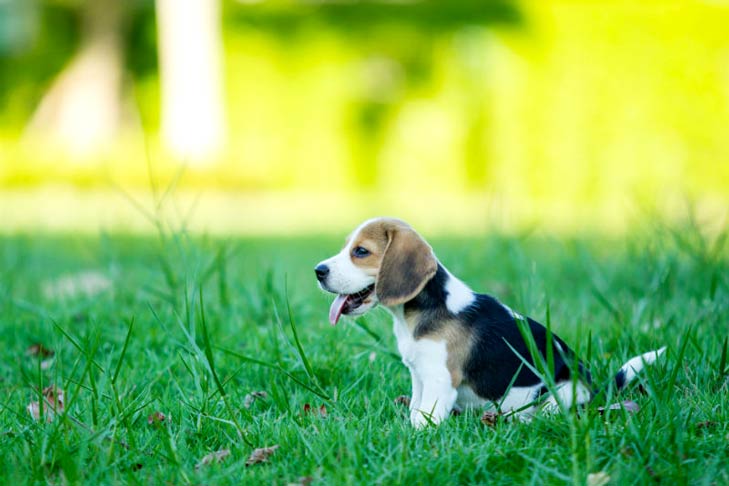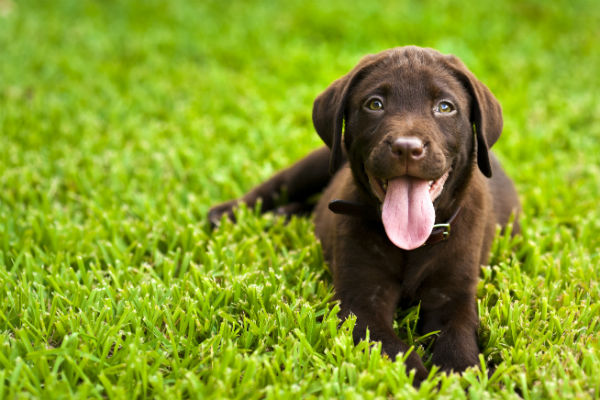
Your yard can be your oasis, but it can also be a land mine of potential hazards to your dog. Whether you’re looking for a new house or want to spruce up your current backyard, there are a number of risks you should pay attention to in order to keep your furry friend safe.
1. Not enough shade
“Just like humans, dogs need a spot to get out of the sun,” says Duffy Jones, a veterinarian at Peachtree Hills Animal Hospital in Atlanta. Otherwise, they can overheat and dehydrate.

“Dogs can suffer canine heat stroke, which can be just as potentially life-threatening to them as it is to humans,” he says.
If you keep your dog outside for an extended period of time, place a doghouse in the shade or an area protected from direct sun.
“Also, make sure the dog has access to plenty of clean water,” he adds. “A big part of the heat stroke is the dehydration that occurs with the overheating.”
In addition to shade structures, you can create cool zones with foliage.
“Create a cozy spot to relax under a tree,” suggests Cassy Aoyagi, co-founder and president of FormLA Landscaping, a sustainable landscaping firm based in Los Angeles. Air temperatures beneath trees can be as much as 20 degrees cooler, she says.
Want to go further? You can cool down an area even more by planting additional heat-absorbing, bush-like foliage. A native grass lawn helps, too.
2. Mulch
The dyes used to color your mulch those vibrant hues of red or cocoa brown can potentially be very hazardous for your dog. For instance, that chocolate-colored mulch actually contains cocoa bean, which has a compound that can be toxic to animals. Theobromine can cause heart rate increases, arrhythmia, hyperactivity, and possibly seizures.
Before installing mulch, read labels or ask your landscaper for details about how the mulch was tinted. Or, avoid dyed mulch altogether.

“It’s the best way to keep pets safe,” Jones says.
Mulch also poses a choking danger.
“Many dogs eat the stuff, which can cause everything from upset stomachs to vomiting and diarrhea, depending on how it’s dyed and whether it’s treated with pesticides,” Jones adds. “Chewed mulch can also result in total intestinal blockages that require surgery,”
Puppies are particularly bad about chowing down on lots of mulch. It’s best to watch your pet carefully and, if he seems to eat mulch excessively, consider some alternatives, like pine straw, which pets won’t usually eat.
3. Ticks
Spending time near the soil increases the chance of a flea or tick hitching a ride into your home on your dog. To ward off these parasites, sprinkle nematodes around the soil, suggests Anthony Smith, president of Nursery Enterprises in Rexburg, Idaho.
Check your local garden center for nematode applications available in your area.
4. Pesticides
Pesticides are a popular way to control weeds. But if not used properly, they can be absorbed by your dog’s pads — poisoning him, perhaps fatally.
The good news is the risk can be significantly reduced if pesticides are allowed to dry completely before your pet prances on the lawn, Jones says.
“A good rule of thumb is allowing 24 hours before your dog walks on the area to let everything dry and the pesticides to be absorbed by the weeds so they can do their job,” Smith adds.
The safest plan is to rid your lawn of weeds the old-fashioned way — by digging them out of the ground. Aoyagi suggests trying to control pests with plant choices.
“Many native grasses are more resistant to weeds because they’re bred for the region,” she says.
5. Certain types of plants
Before undertaking any landscape renovation, make sure your landscaper knows you have a dog, as well as its size, breed, and tendencies. Why? Many dogs like to snack on a variety of different shrubs, flowers, and plants — and some of them can be toxic.
“Oleanders, autumn crocus, and azaleas are just a few plants that can be dangerous to pets,” Aoyagi says. These can cause vomiting, diarrhea, excessive drooling, and even death (depending on the plant and amount eaten).

“Knowing your dog’s habits and discussing them with your landscape designer will help ensure you get a garden that works for your full family,” she says.
6. Your driveway
It’s not just plants and soil that can be dangerous to pets. If you have a gravel or asphalt driveway, there are risks, too. Gravel can get lodged between a large dog’s paw pads, or it can cause small breeds to choke. And an asphalt driveway can burn a dog’s pads when it gets too hot. You probably can’t keep your dog off your driveway, but you should know how to treat your pup’s pads if he burns his paws. Your best bet in this and any pet health crisis is to consult your vet, or a pet emergency room if the incident occurs off hours.
By: Gina Roberts-Grey
This article “6 Ways Your Yard Can Kill Your Pets” appeared first on Real Estate News and Insights from realtor.com.
Want more information on living with pets in your home? Get tips here.


